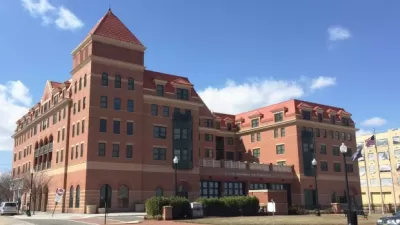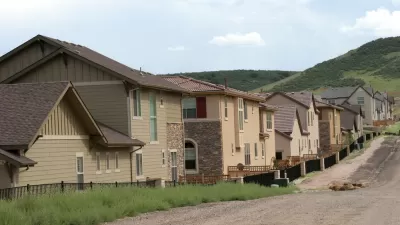What do the residents of Vancouver's False Creek North think of living in one of the largest centrally located, high-density, pedestrian- and family-oriented mixed-use neighbourhoods in the world?
What do the residents of Vancouver's False Creek North think of living in one of the largest centrally located, high-density, pedestrian- and family-oriented mixed-use neighbourhoods in the world?
Hardly anyone thinks to ask the people who move in after a project is designed and built. In this case, graduate students at UBC's School of Community and Regional Planning, under the guidance of Professors Wendy Sarkassian and Larry Beasley, set off to find out how False Creek North is meeting the needs of those who call it home. They asked for the good and bad, and after engaging over a thousand people, including students at the local elementary school, they reported out.
You can read the full study - Living in False Creek North - for yourself.
I've also devoted a full issue of my online magazine "Price Tags" to their findings, and included some background on the development of False Creek since the days (a century ago) when it was a polluted industrial basin.
The most fascinating result? Ninety-six percent of the residents said they would recommend the area to others to come and live there - a level not reported in any other studies that the team was able to find so far.
The greatest concern, on the other hand, is a consequence of the project's own success. increasing unaffordability. False Creek North may be one of the only places where people want the empty sites reserved for affordable housing to be built out as soon as possible.
They also want more schools and child-care centres. There are more children among the ten thousand residents in this highrise community than in some of the older nearby suburbs, and there's a shortage of services for both toddlers and young teens. One thing for sure: high-density housing does not discourage people from raising families, so long as they're planned for.
Residents were also less than enamoured with the architecture: too monotonous, gray and green. Suite design needs more flexibility. Residents would like a greater range of shopping. They love their community centre, the parks and the seawall, but have problems with dogs. Parking for visitors is an issue; personal safety isn't.
You can see it all for yourself - and much more - in Price Tags 104.

Alabama: Trump Terminates Settlements for Black Communities Harmed By Raw Sewage
Trump deemed the landmark civil rights agreement “illegal DEI and environmental justice policy.”

Planetizen Federal Action Tracker
A weekly monitor of how Trump’s orders and actions are impacting planners and planning in America.

The 120 Year Old Tiny Home Villages That Sheltered San Francisco’s Earthquake Refugees
More than a century ago, San Francisco mobilized to house thousands of residents displaced by the 1906 earthquake. Could their strategy offer a model for the present?

Indy Neighborhood Group Builds Temporary Multi-Use Path
Community members, aided in part by funding from the city, repurposed a vehicle lane to create a protected bike and pedestrian path for the summer season.

Congestion Pricing Drops Holland Tunnel Delays by 65 Percent
New York City’s contentious tolling program has yielded improved traffic and roughly $100 million in revenue for the MTA.

In Both Crashes and Crime, Public Transportation is Far Safer than Driving
Contrary to popular assumptions, public transportation has far lower crash and crime rates than automobile travel. For safer communities, improve and encourage transit travel.
Urban Design for Planners 1: Software Tools
This six-course series explores essential urban design concepts using open source software and equips planners with the tools they need to participate fully in the urban design process.
Planning for Universal Design
Learn the tools for implementing Universal Design in planning regulations.
Clanton & Associates, Inc.
Jessamine County Fiscal Court
Institute for Housing and Urban Development Studies (IHS)
City of Grandview
Harvard GSD Executive Education
Toledo-Lucas County Plan Commissions
Salt Lake City
NYU Wagner Graduate School of Public Service





























